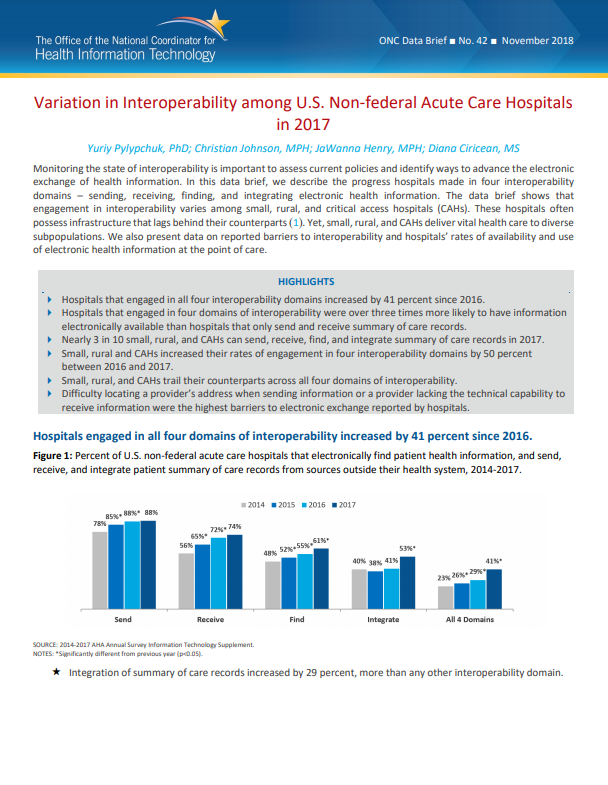
Monitoring the state of interoperability is important to assess current policies and identify ways to advance the electronic exchange of health information. In this data brief, we describe the progress hospitals made in four interoperability domains…
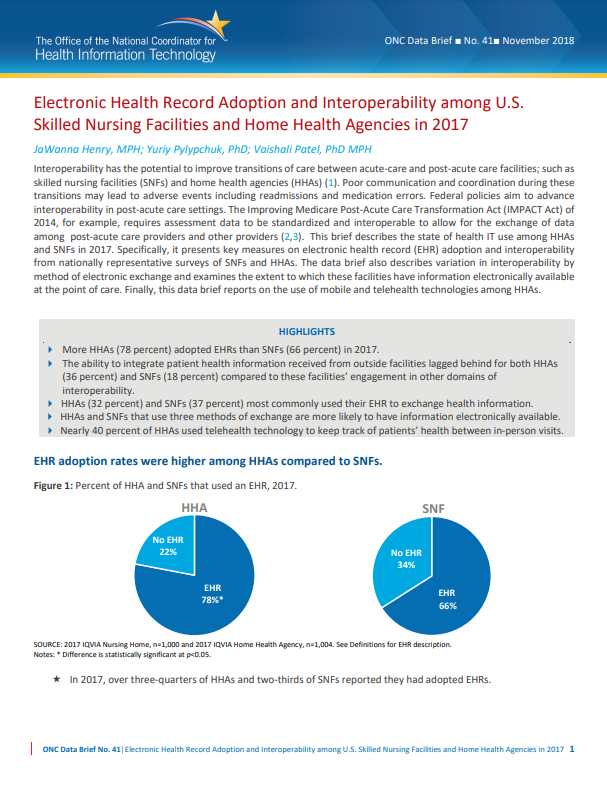
This brief describes the state of health IT use among HHAs and SNFs in 2017. Specifically, it presents key measures on electronic health record (EHR) adoption and interoperability from nationally representative surveys of SNFs and HHAs. The data…
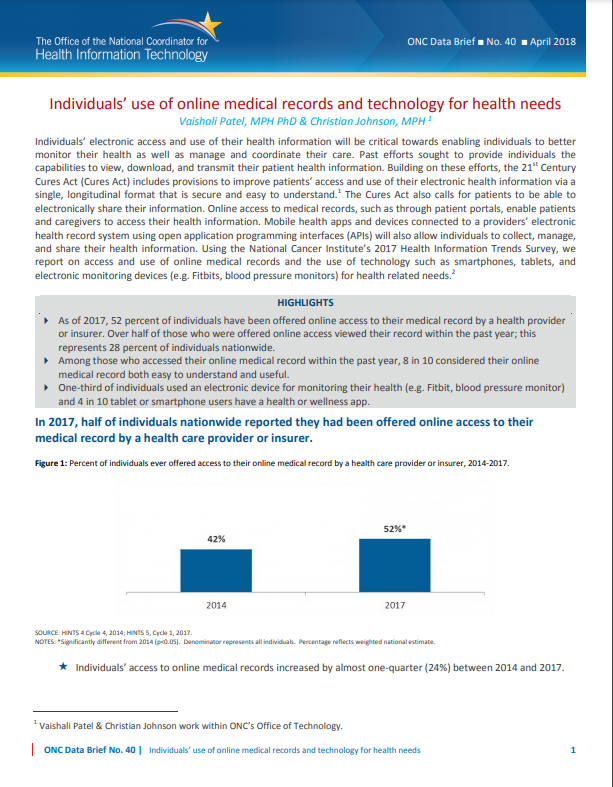
Online access to medical records, such as through patient portals, enable patients and caregivers to access their health information. Mobile health apps and devices connected to a providers' electronic health record system using open…

Electronic Health Record Adoption and Interoperability among U.S. Skilled Nursing Facilities in 2016
This data brief presents key measures on EHR adoption and interoperability from a 2016 nationally representative sample of skilled nursing facilities (SNF). It also describes the variation in EHR adoption and interoperability by SNF characteristics…
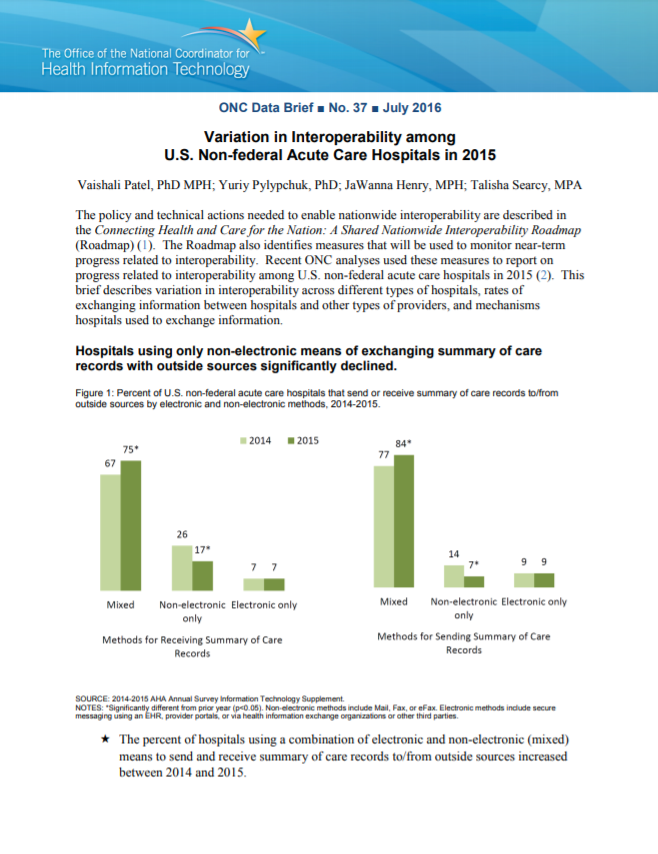
This ONC Data Brief describes variation in interoperability across different types of hospitals, rates of exchanging information between hospitals and other types of providers, and mechanisms hospitals used to exchange information. .
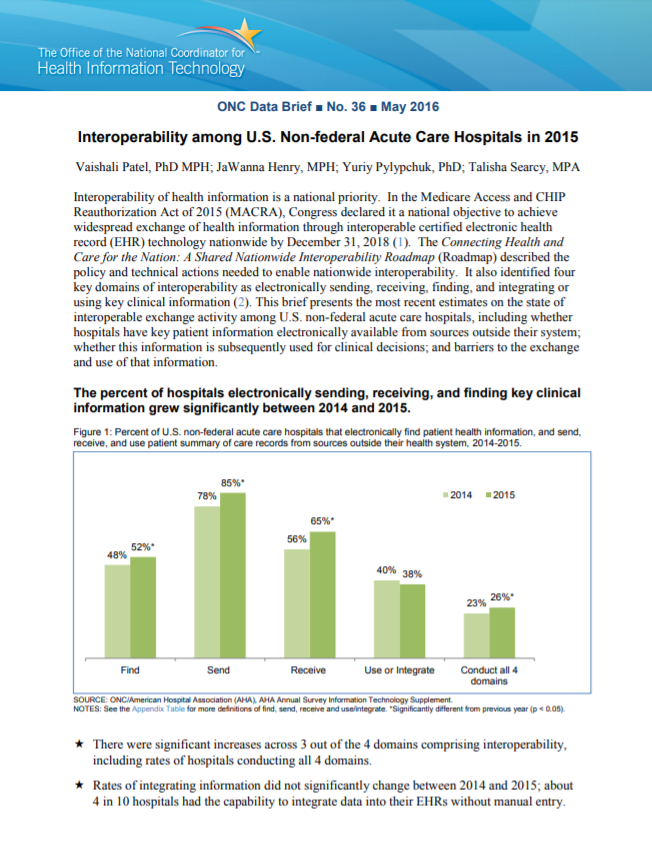
Over 1 in 4 hospitals can electronically find, send, receive, and use key clinical information - an important metric for tracking interoperability. This brief presents the most recent estimates on the state of interoperable exchange activity among U…
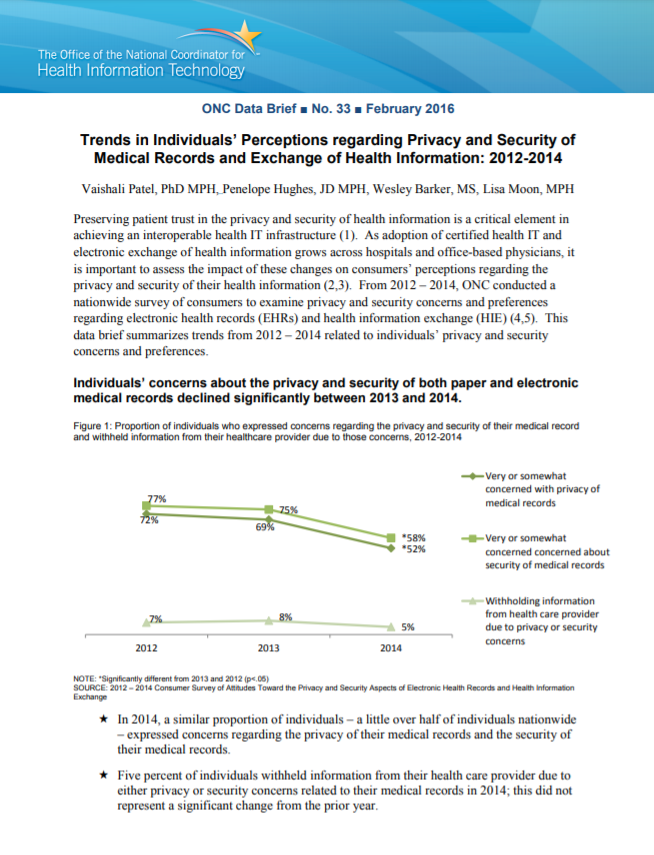
Preserving patient trust in the privacy and security of health information is a critical element in achieving an interoperable health IT infrastructure. As adoption of certified health IT and electronic exchange of health information grows across…
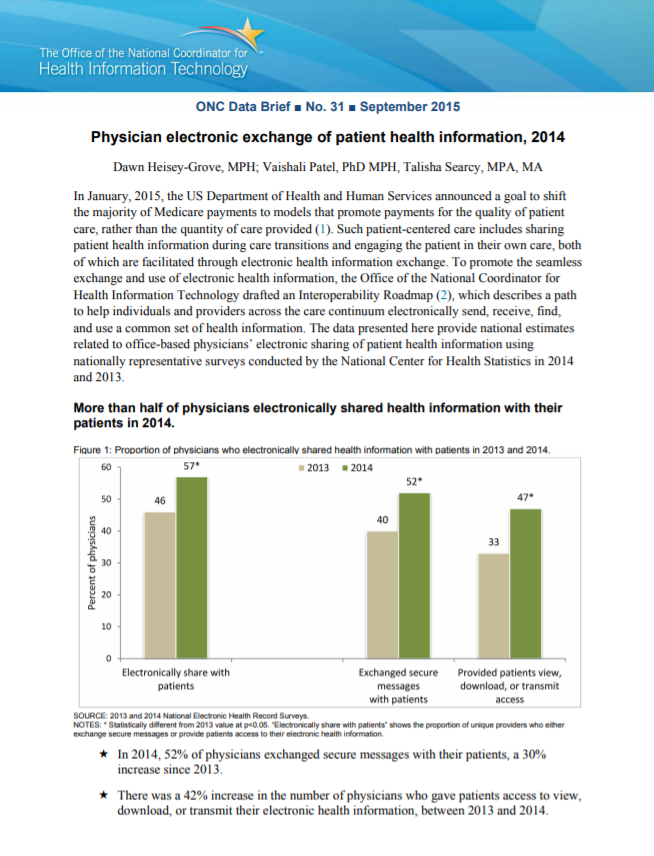
It is a national priority for a majority of individuals and providers along the care continuum to electronically send, receive, find, and use health information by 2017. Patient-centered care includes sharing patient health information during care…
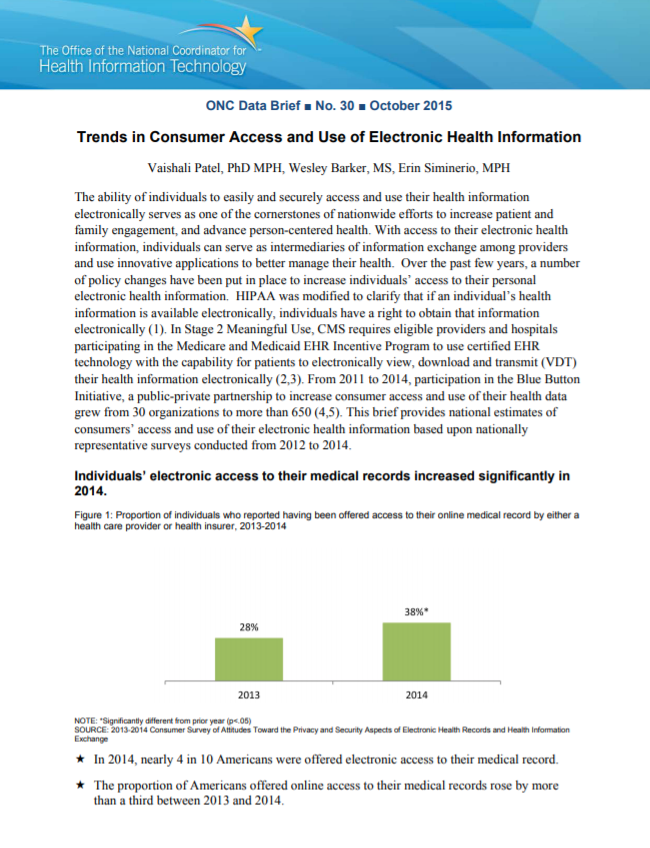
The ability of individuals to easily and securely access and use their health information electronically serves as one of the cornerstones of nationwide efforts to increase patient and family engagement, and advance person-centered health. With…
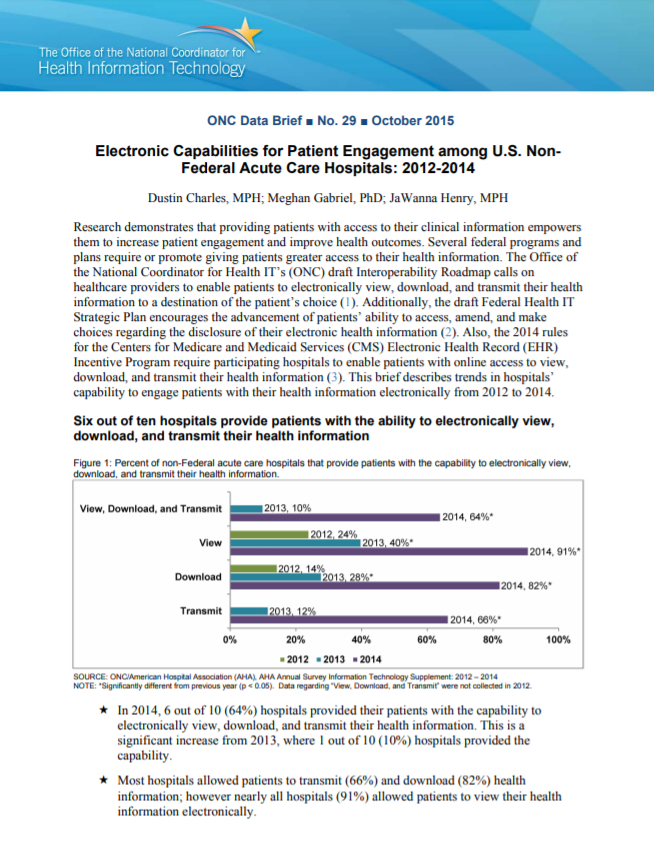
Research demonstrates that providing patients with access to their clinical information empowers them to increase patient engagement and improve health outcomes. Hospitals, which play a critical role in coordinating patient care with a variety of…
![Interoperability among U.S. Non-federal Acute Care Hospitals, 2014 [pdf]](/sites/default/files/2021-08/db-25.png)
This brief presents baseline estimates on the state of interoperable exchange activity among U.S. non-federal acute care hospitals to electronically find, send, receive, and use health information from other systems. The brief also explores whether…
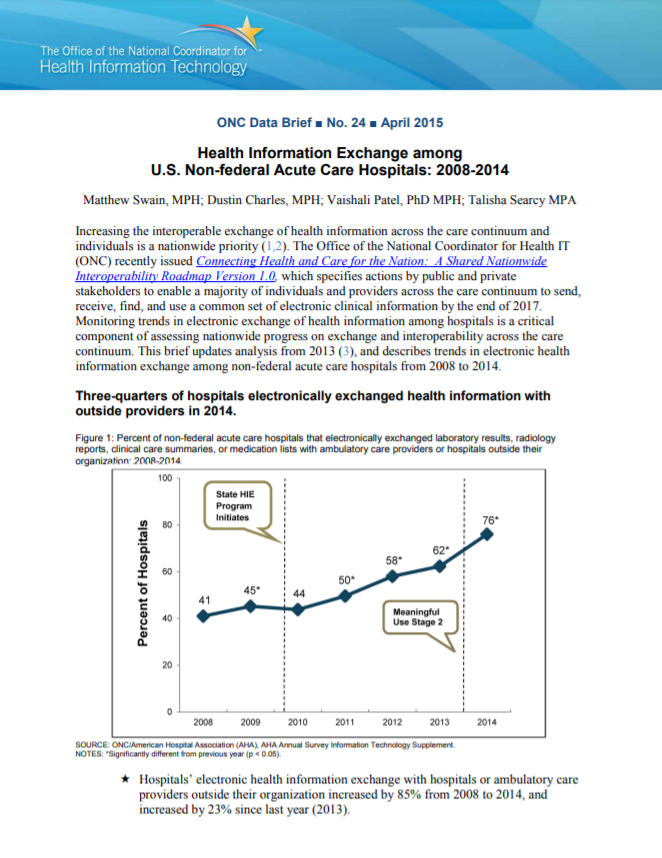
This brief updates analysis from 2013 and describes trends in electronic health information exchange among non-federal acute care hospitals from 2008 to 2014. In 2014 three-quarters of hospitals electronically exchanged health information with…

The ability of individuals to access and use their online medical records serves as one of the cornerstones of national efforts to increase patient engagement and improve health outcomes. This brief presents national data regarding individuals…
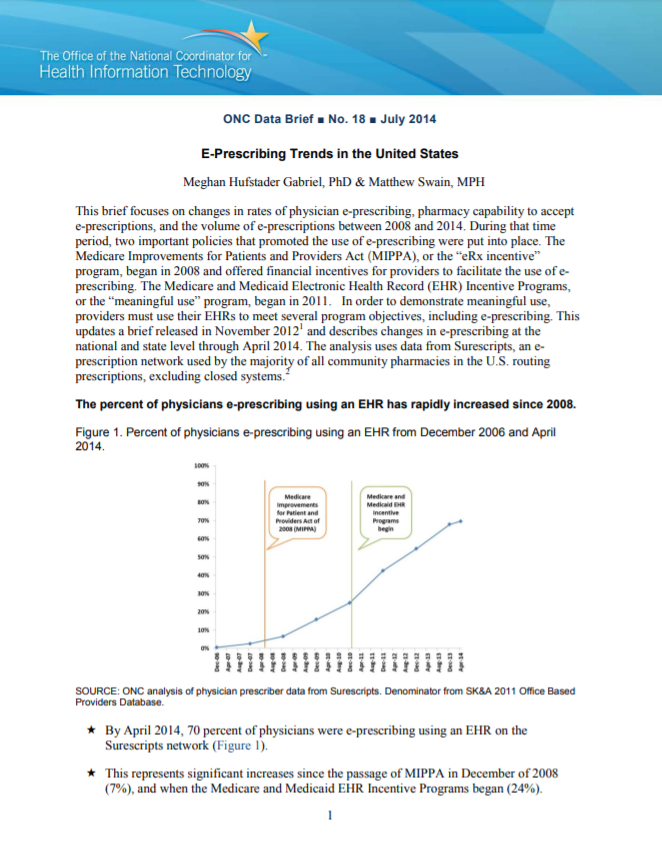
This brief focuses on changes in rates of physician e-prescribing, pharmacy capability to accept e-prescriptions, and the volume of e-prescriptions between 2008 and 2014. This updates a brief released in November 2012 and describes changes in e-…

In 2013, more than six in ten hospitals (62%) electronically exchanged health information with providers outside of their system. Electronic health information exchange among hospitals and outside providers increased 51% from 2008 to 2013. .

Two-thirds of clinical laboratories reported the capability to send a structured test result to an ordering practitioner's EHR in 2012. In addition, the majority of laboratory test results were sent electronically in a structured format to an…
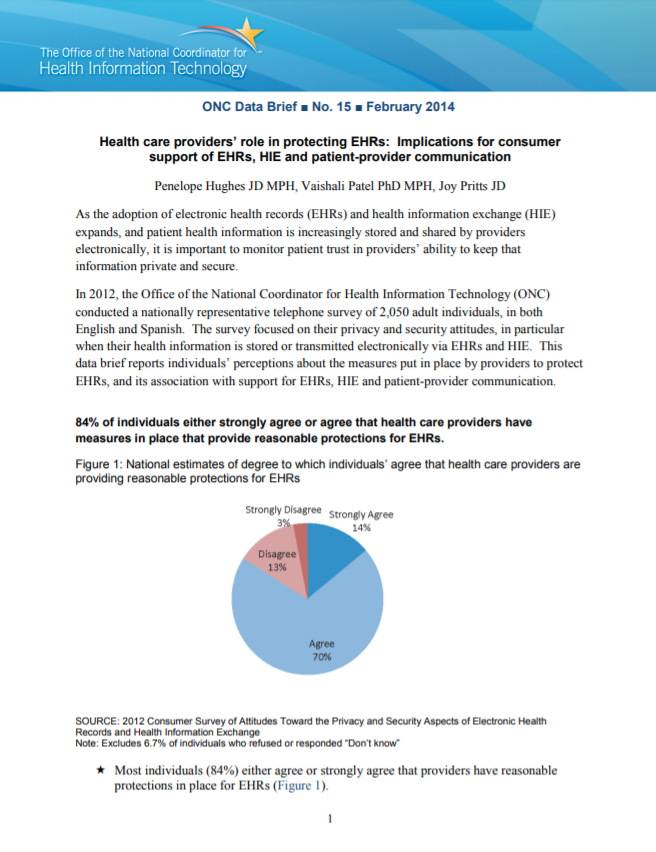
By 2012 84% of individuals either strongly agree or agree that health care providers have measures in place that provide reasonable protections for EHRs. .
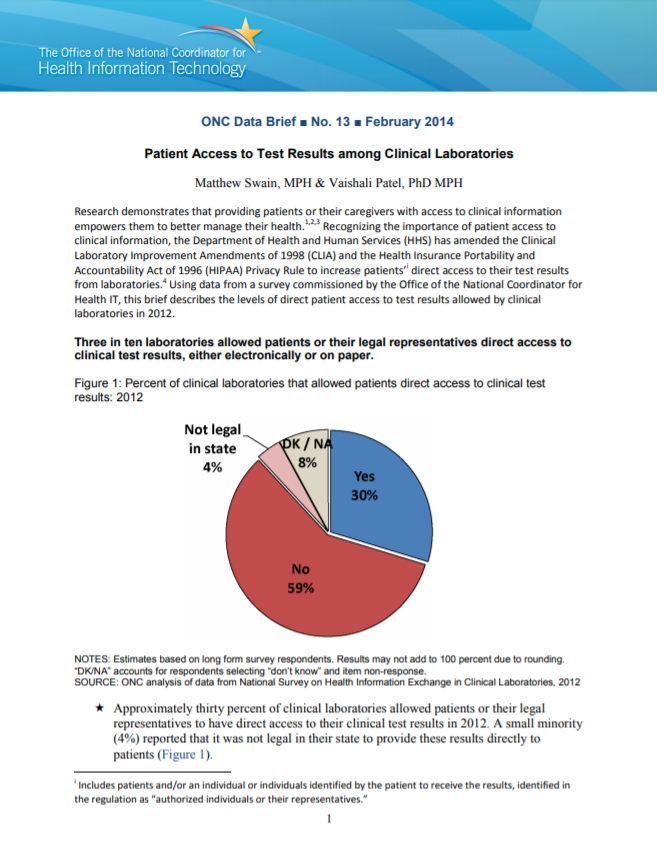
Three in ten laboratories allowed patients or their legal representatives direct access to clinical test results, either electronically or on paper. .

